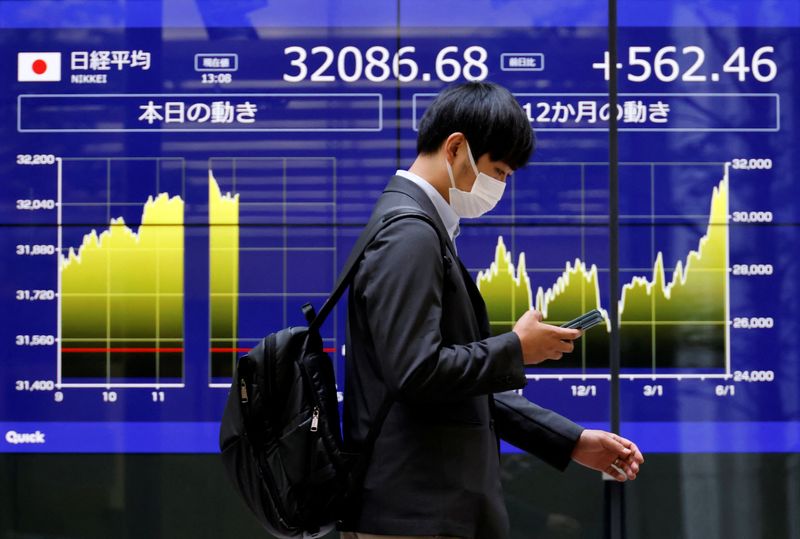By Jamie McGeever
(Reuters) – A look at the day ahead in Asian markets from financial markets columnist Jamie McGeever.
Investors in Asia enter the final trading day of a bustling quarter (also a day packed with economic indicators from Japan) in slightly better mood after a much-needed recovery in global sentiment and risk assets on Thursday.
Japanese retail sales, industrial production, consumer confidence and inflation data from Tokyo top the regional calendar on Friday, which also includes Australian credit and credit figures and Thai manufacturing and current account data.
Investors won’t be able to switch off completely this weekend, however, with the fast-evolving Evergrande saga making for gripping reading material.
In addition, China’s purchasing managers’ index reports for September – official and unofficial – will be released on Sunday. The Chinese markets will then close for the Golden Week holiday.
It’s been a tough few weeks and a tough quarter.
The rise in the MSCI World stock index on Thursday was the first in 10 days, breaking its longest losing streak since November 2011. Unless the index rises 4% on Friday, the index will post its first quarterly loss in a year.
The index performed even worse. It is on track for a 5% decline, which will be its second consecutive quarterly loss and seventh in the last nine.
Other Asia-related statistics from the quarter tell a similar story.
The yen has fallen three quarters in a row, and 10 of the last 11; Hong Kong’s property index has fallen for three quarters, down 17% in the third quarter and down 30% so far this year, on track for its worst year since 2008; and Chinese stocks have fallen two quarters in a row for the first time since 2019.
The factors are now known: rising interest rates in the US, rising government bond yields and a strong rally in the dollar, but also a chronically underperforming China, tighter financial conditions and increasing concerns about the global economy.
Some of these conditions can last a long time and cause the gloom to boil over. Would a partial recovery in risk appetite and the unwinding of many of these transactions at the start of the fourth quarter be a complete surprise?
Thursday’s market action shows that nothing ever moves in a straight line. Although reaching a new intraday high, US yields fell across the curve, oil and the dollar posted notable losses, and stocks ultimately rose.
Maintaining its positivity, the International Monetary Fund said Thursday it sees signs of economic stabilization in China and is confident it can grow faster if it takes steps to rebalance growth from investment to consumer spending.
In foreign exchange markets, the yuan had its best day in two weeks on Thursday, with the yen sliding slightly further from the 150/$ level and falling 0.5%, the biggest drop in almost three weeks.
Here are the key developments that could give more direction to the markets on Friday:
– Japanese Unemployment, Retail Sales, Industrial Production (August)

– Japan Tokyo CPI inflation (August)
– Loans in Australia, credit (August)
(by Jamie McGeever; editing by Josie Kao)


